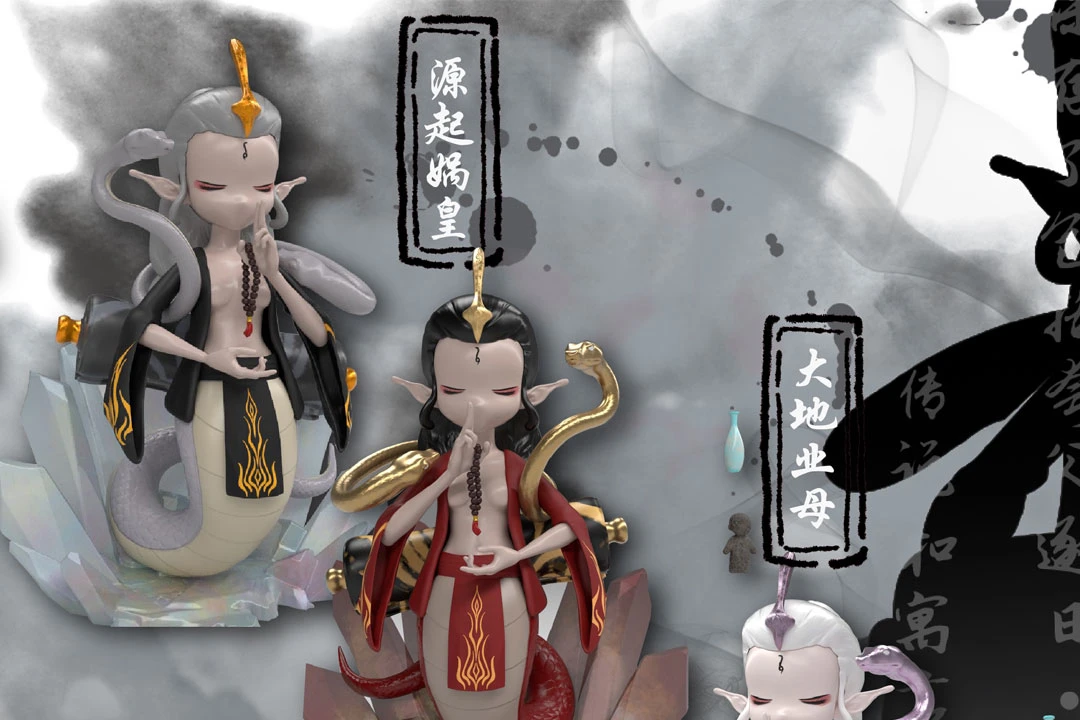In recent years, Qingdao has emerged as a vibrant hub where traditional culture meets modern innovation through a wave known as "Guochao." This cultural phenomenon has swept across industries ranging from food and beverages to cultural creativity, driven by a fusion of established brands and new ventures.
Rediscovering Tradition with a Modern Twist
The essence of "Guochao" lies in revitalizing traditional Chinese culture and infusing it with contemporary elements to resonate with younger generations. It goes beyond mere nostalgia, emphasizing a seamless blend of cultural and commercial values. This shift is exemplified by Qingdao's iconic brands, which have reinvented themselves to cater to evolving consumer preferences.
For instance, Qingdao Beer, in collaboration with Dunhuang Culture and Tourism, introduced the collaborative beer "Taibai Drunk," marking a creative intersection of "beer + art." Meanwhile, Qingdao Food ventured into livestreaming with the "Walking Together" platform, selling 25,000 packs of calcium milk biscuits within minutes. These initiatives highlight a strategic embrace of digital marketing to engage with a tech-savvy audience.

From Heritage to Innovation: The Rise of New Brands
Beyond revitalizing established brands, Qingdao has also seen a surge in new ventures capitalizing on the "Guochao" trend. One such example is Shanhai Jingguai, an IP brand that blends elements from the classic Chinese text "Classic of Mountains and Seas" with contemporary cultural trends. Founder Hu Jinhao, a veteran marketer, has leveraged crowdfunding and cultural festivals to promote over 100 products, including figurines and exhibitions that resonate with today's youth.
Hu emphasizes that Shanhai Jingguai isn't just about creating another trendy product but establishing itself as a pivotal player in the "Guochao" IP market. The brand's annual cultural festivals, held at Qingdao Olympic Sailing Center since 2021, have become hotspots for tourists, underscoring Qingdao's growing influence in cultural tourism.
Challenges and Opportunities in the "Guochao" Era
While "Guochao" presents immense opportunities for brands to boost visibility and sales, it also poses challenges. Many brands, eager to ride the trend, risk being labeled as superficial or short-lived if they fail to integrate genuine cultural resonance into their products. Experts suggest that sustainable success lies in continuous innovation, quality improvement, and market relevance.
Qingdao Food, with over 74 years of history, exemplifies this approach by expanding its "Guochao-style" product line beyond its signature calcium milk biscuits. By embracing new marketing channels like livestreaming and short videos, the company has diversified its offerings with products like calcium milk cakes and rolls, appealing to a broader consumer base while staying true to its heritage.
Similarly, Qingdao Beer has cemented its position as a leader in "Guochao" strategies, leveraging cultural elements like zodiac signs and traditional motifs on its packaging. This approach not only appeals to domestic consumers but also enhances the brand's international appeal by telling compelling "Chinese stories."
Sustainability and Longevity
Beyond fleeting fame, achieving long-term success in the "Guochao" era requires brands to uphold high standards of quality, affordability, and aesthetic appeal. Products that resonate with consumers on a deeper level and offer lasting value are more likely to sustain their popularity and influence.
For instance, companies like Shanhai Jingguai and Qingdao Food are not merely riding the wave of popularity but actively shaping it through consistent innovation and strategic brand management. Their ability to adapt to changing market dynamics and consumer preferences underscores Qingdao's role as a pioneer in cultural rejuvenation.
As Qingdao continues to navigate the evolving landscape of "Guochao," the city's enterprises are poised to lead not only in domestic markets but also on the global stage. By balancing tradition with innovation and authenticity with modernity, Qingdao exemplifies how cultural heritage can be a catalyst for economic growth and international influence.
The journey of Qingdao's enterprises in embracing "Guochao" is not just about revitalizing brands but redefining cultural narratives and reimagining consumer experiences. As they continue to innovate and evolve, these enterprises are setting new benchmarks for the intersection of tradition and modernity in contemporary Chinese society.
Cultural Resonance and Market Expansion
Qingdao's approach to "Guochao" extends beyond local markets, aiming to resonate globally. The strategic partnerships and innovative product developments are not just about capturing current trends but also about fostering a deeper cultural connection that transcends geographical boundaries. This cultural resonance is crucial as Qingdao brands seek to expand their footprint internationally, leveraging China's rich cultural heritage as a unique selling proposition.
For example, Qingdao Beer's collaborations with international platforms and its participation in global events like New York Fashion Week's China Day have helped position the brand as a symbol of Chinese cultural pride on the global stage. By integrating traditional Chinese motifs into its packaging and promotional activities, Qingdao Beer has successfully bridged cultural gaps and enhanced its brand appeal among diverse audiences worldwide.
Similarly, Shanhai Jingguai's innovative approach to cultural IP has garnered attention not only domestically but also internationally. Through strategic partnerships and participations in cultural festivals abroad, the brand has introduced Chinese mythology and folklore to a global audience, fostering cross-cultural exchange and appreciation.
Challenges and Future Directions
However, navigating the complexities of "Guochao" presents challenges as well. The rapid pace of consumer trends and the need for continuous innovation require Qingdao enterprises to remain agile and adaptable. Maintaining authenticity while meeting evolving consumer expectations is a delicate balance that requires careful planning and execution.
Moreover, as more brands enter the "Guochao" arena, competition intensifies, necessitating differentiation through unique value propositions and sustainable practices. Companies must invest in research and development, market analysis, and consumer insights to stay ahead in this dynamic market landscape.
Looking forward, Qingdao's enterprises are poised to capitalize on the momentum of "Guochao" by further exploring new product categories, expanding digital marketing strategies, and enhancing brand visibility both domestically and internationally. Embracing sustainability and ethical practices will also be crucial in maintaining long-term growth and consumer trust.
In conclusion, Qingdao's embrace of "Guochao" exemplifies a strategic fusion of tradition and innovation, transforming cultural heritage into a driving force for economic growth and global influence. As enterprises continue to innovate and expand their reach, Qingdao stands at the forefront of China's cultural rejuvenation, showcasing how ancient traditions can inspire contemporary lifestyles and consumer experiences.
By leveraging its rich cultural legacy and embracing modern market dynamics, Qingdao not only revitalizes its brands but also contributes to a broader narrative of Chinese cultural resurgence on the global stage. As these enterprises navigate the complexities of "Guochao," they pave the way for a future where tradition and innovation harmoniously coexist, shaping the cultural and economic landscape of tomorrow.



